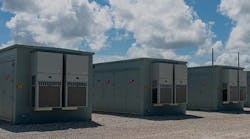Energy revolutions are decades in the making. From steam to hydrocarbons, these epic shifts in the way we power our world are written one painstaking chapter at a time, but have the potential to reshape the global economy. And so it is also with hydrogen.
Born of necessity and fueled by invention, the story of hydrogen power is finally beginning to pick up pace. Everything from smartphones to electric vehicles (EVs) are driving unprecedented demand for long-lasting, lightweight, dependable energy. And today’s mix of fossil fuels and batteries will not be able to meet the needs of our increasingly digital, mobile, wireless world.
That’s why forward-thinking companies like Toyota are doubling down on hydrogen and investing aggressively in hydrogen-fueled cars.
"Toyota believes strongly in the potential of hydrogen fuel cells to be the power train of the future, and we are in good company. Hyundai, Honda, and Mercedes-Benz all now offer fuel cell vehicles," said Chris Hostetter, group vice president, advanced technology research, Toyota Motor North America. "In an annual survey of automotive industry executives (conducted last year by KPMG), hydrogen was ranked as the number one trend in the automotive industry — above autonomous technology and connectivity."
Hydrogen is the most abundant element on earth. It’s clean burning and produces zero carbon emissions. But its adoption as a viable source of energy has been hampered by noncompetitive costs and a lack of existing infrastructure.
That is changing. Recent years have seen some critical innovations in hydrogen fuel, opening its application to a wide range of commercial, industrial, and consumer markets.
"To deliver on its promise as a real solution to the world’s growing energy needs, hydrogen must be readily available, cost-effective, safe, and easy to use," said Kris Lichter, CEO of Ardica Technologies, a San Francisco-based maker of solid hydrogen fuel. "Our customers are looking for flexible, reliable energy solutions that can be simply delivered, stored, and deployed using existing infrastructure. And the science has advanced to the point where that is now possible with solid hydrogen."
Ardica specializes in the production of Alane, a highly stable, extremely lightweight hydrogen powder now used by a select set of customers in industrial and military applications. The U.S. Army has been working closely with Ardica for many years to test Alane’s superior ability to power a wide range of mobile and vehicular applications. By replacing traditional batteries, Alane greatly reduces weight and extends operations while increasing the safety and efficiency of the soldiers.
The U.S. Army chose Alane because it can be stored, shipped, stocked, and accessed easily. Alane does not lose its energy potential over time and is unaffected by temperature variations. It does not require massive capital investment to develop new infrastructure, and can be recycled and regenerated.
But those same qualities make it a viable energy option for a variety of uses well beyond military and government use. Experts expect to see Alane extend the range of EVs, deliver more flexible, reliable backup power generation, and eventually power mobile devices of all sizes. Alane and other types of hydrogen delivery offer fuel flexibility for a variety of transportation industries, from auto and airplane manufacturers to commercial shipping, to unmanned vehicles and robotics. The U.S. government recognized the importance of Alane in October 2018, when President Trump issued a Presidential Determination stating the development and purchase of equipment and materials needed for Alane fuel cells were essential to our national defense.
This renewed interest and substantial investment in hydrogen is rapidly driving down costs. That is not to say Alane will reshape the global economy on its own. But it is a critical vehicle in finally ushering in the hydrogen era, one with significantly less complexity, time, and capital.
In the near term, hydrogen fuel cells, like the ones Ardica produces, will take their place alongside advanced batteries and other sources of sustainable power, like wind and solar. Gas, for all its faults, is still abundant and relatively low cost. Hydroelectric systems will continue to feed mass electric grids. And batteries will always have their place.
But in the very near future, our highways will be filled with cars running on clean, renewable liquid hydrogen and solid-state Alane. And our mobile devices will enjoy weeks — perhaps months — of uninterrupted use.


